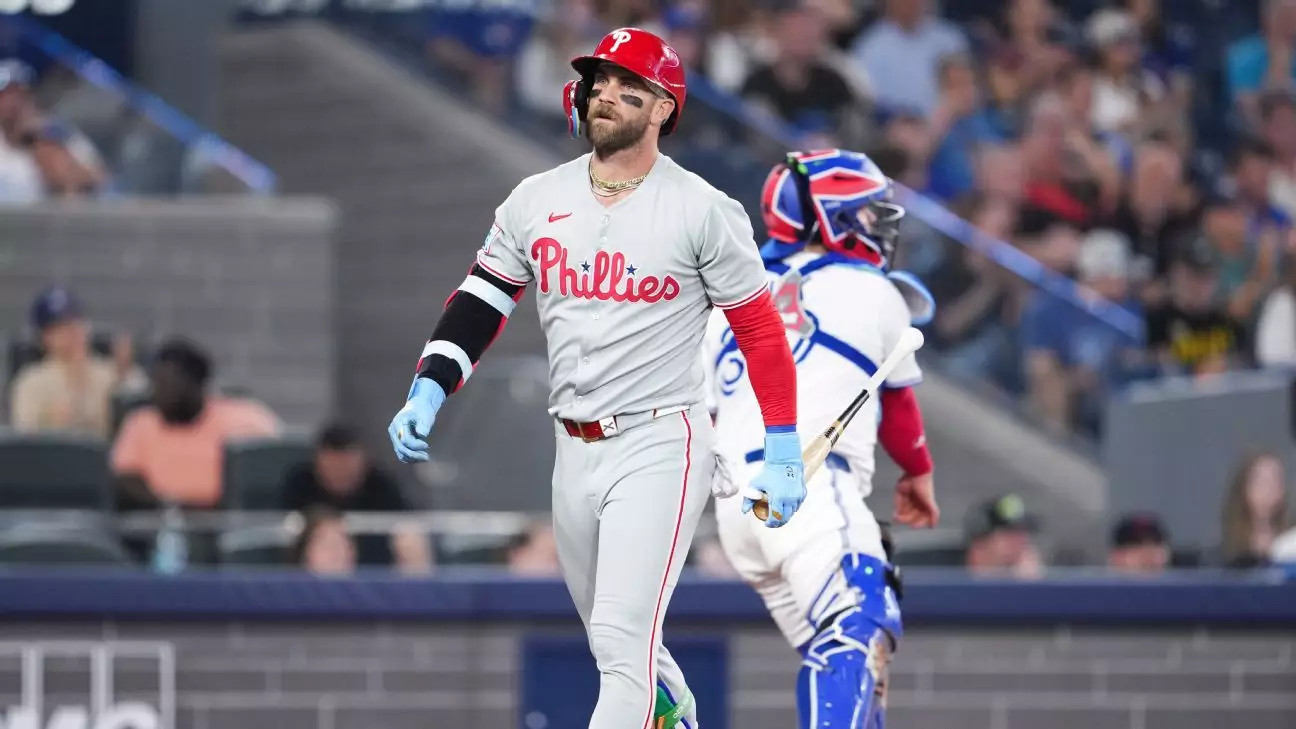Bryce Harper’s return to the Philadelphia Phillies after a nearly monthlong hiatus due to right wrist inflammation underscores not only his personal resilience but also the critical timing required for professional athletes managing chronic injuries. Harper, a perennial star with accolades that include two National League MVP awards and eight All-Star selections, has battled discomfort in his wrist since last season. Despite this lingering pain, his perseverance has been instrumental in keeping the Phillies competitive in the NL East.
The decision to come back now stems from a realistic assessment of his recovery. Harper admitted that recent days showed little improvement, thus signaling a plateau in healing. In the demanding world of professional sports, athletes often face the dilemma of waiting for a complete recovery or returning as soon as it’s bearable. Harper’s choice reflects a pragmatic mindset, recognizing that sometimes “good enough” is optimal when the team’s needs weigh heavily.
The Wrist: Lingering Concern or Manageable Condition?
The injury itself—a wrist plagued by inflammation—poses nuanced challenges. For a slugger like Harper, whose power and bat speed are foundational to his game, wrist health is paramount. Yet Harper’s comments suggest that the discomfort is now manageable and consistent, without acute deterioration during batting practice or live pitching sessions. This signals progress but also hints at limitations—he must still monitor his body’s response day by day.
Notably, Harper’s injury hasn’t confined him to the sidelines alone. He quietly endured pain throughout the early season, producing respectable numbers (.258 batting average, nine home runs, 34 RBIs), demonstrating his commitment and mental toughness. This ability to play through pain is impressive but raises questions about long-term health implications. Can Harper sustain this approach without compromising future seasons? The burden of a $330 million contract alongside expectations can sometimes distort an athlete’s judgment, pushing them back onto the field prematurely.
Team Dynamics and The Role of Emerging Talent
Harper’s absence was keenly felt, yet the Phillies maintained a tenuous hold on the NL East lead with a 13-14 record. This balance speaks to the team’s resilience but also highlights how much they rely on Harper’s presence. His return clearly ignites hopeful energy within the lineup, potentially rejuvenating their offense.
Replacing Harper in the interim was rookie Otto Kemp, whose versatility in playing third base and outfield has been a valuable asset. Kemp’s steady contributions (10 RBIs in 20 games) have showcased the Phillies’ ability to develop young talent, which is critical for a team balancing veterans with rookies. However, Harper’s return complicates roster decisions — the team had to designate Buddy Kennedy for assignment to accommodate him. The managerial staff faces strategic questions about balancing Harper’s minutes, especially if his wrist demands careful management.
Adding complexity is the DH role, where Kyle Schwarber excels with 25 home runs. Harper has not ruled out taking that position, which might allow him to contribute offensively while reducing strain from fielding. These lineup adjustments will be pivotal for the Phillies as they navigate postseason aspirations.
The Psychological Edge and Legacy at Stake
Beyond the physical dimension, Harper’s return carries psychological weight. His leadership and status as a franchise cornerstone put him under a microscope. Fans and teammates alike expect not just performance but inspiration. Harper’s track record—leading the Phillies to three straight playoff appearances and earning 2022 NLCS MVP honors—adds significant pressure to justify his presence despite injury concerns.
This narrative reveals the high-stakes environment that defines elite baseball. Harper’s career is at a complex juncture. On one hand, his megacontract and legend status grant leverage and resources for recovery. On the other, every performance is scrutinized for signs of decline or missed value. How Harper navigates these challenges will define not only the Phillies’ season but also his place in the franchise’s history.
Harper’s measured return exemplifies the delicate balance athletes must strike between peak performance and health preservation. It’s a bold move fueled by experience and team loyalty, with far-reaching implications for both his career and the Phillies’ postseason ambitions.

